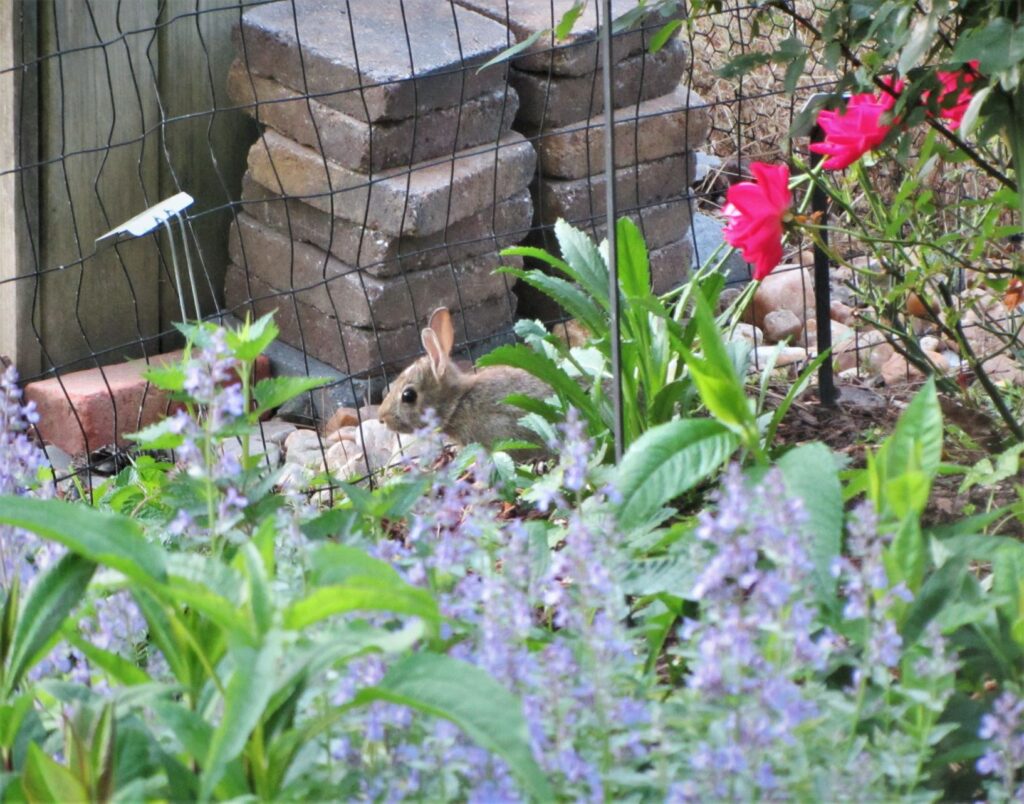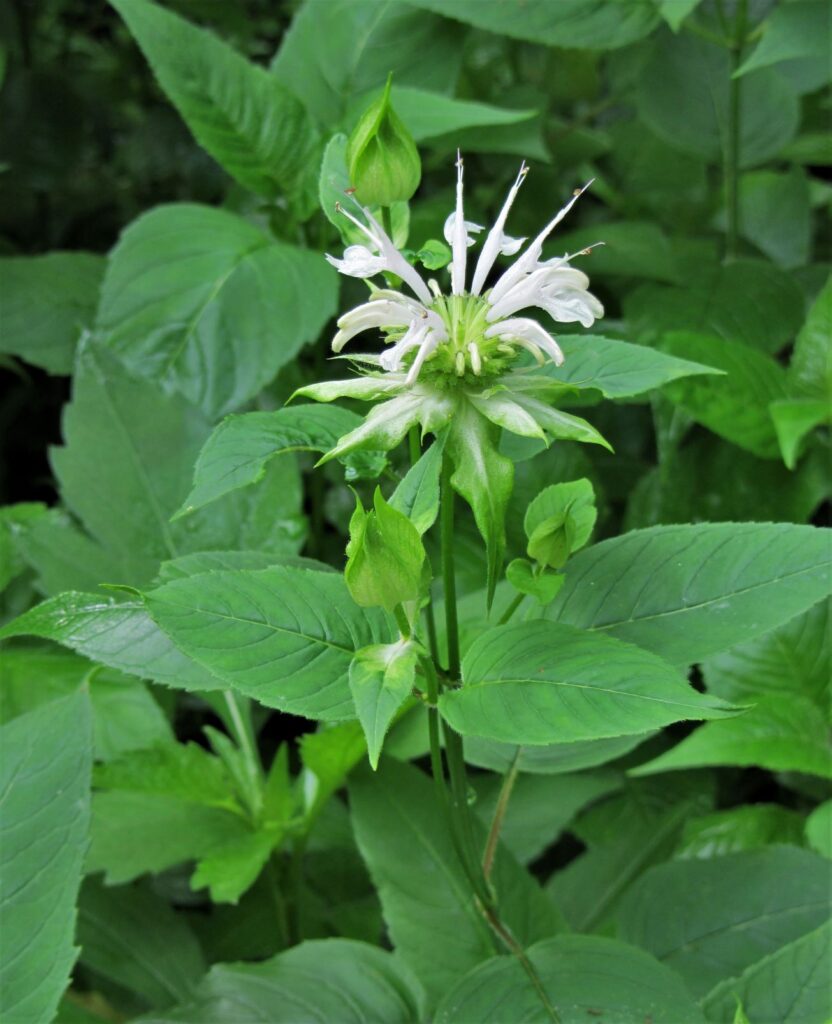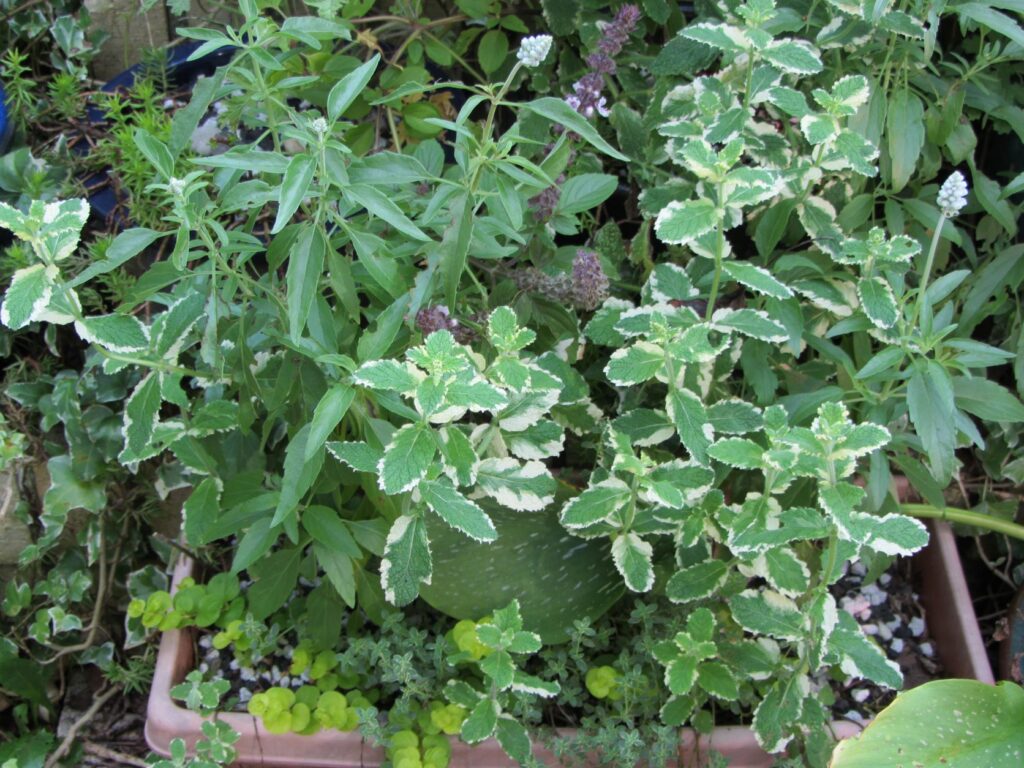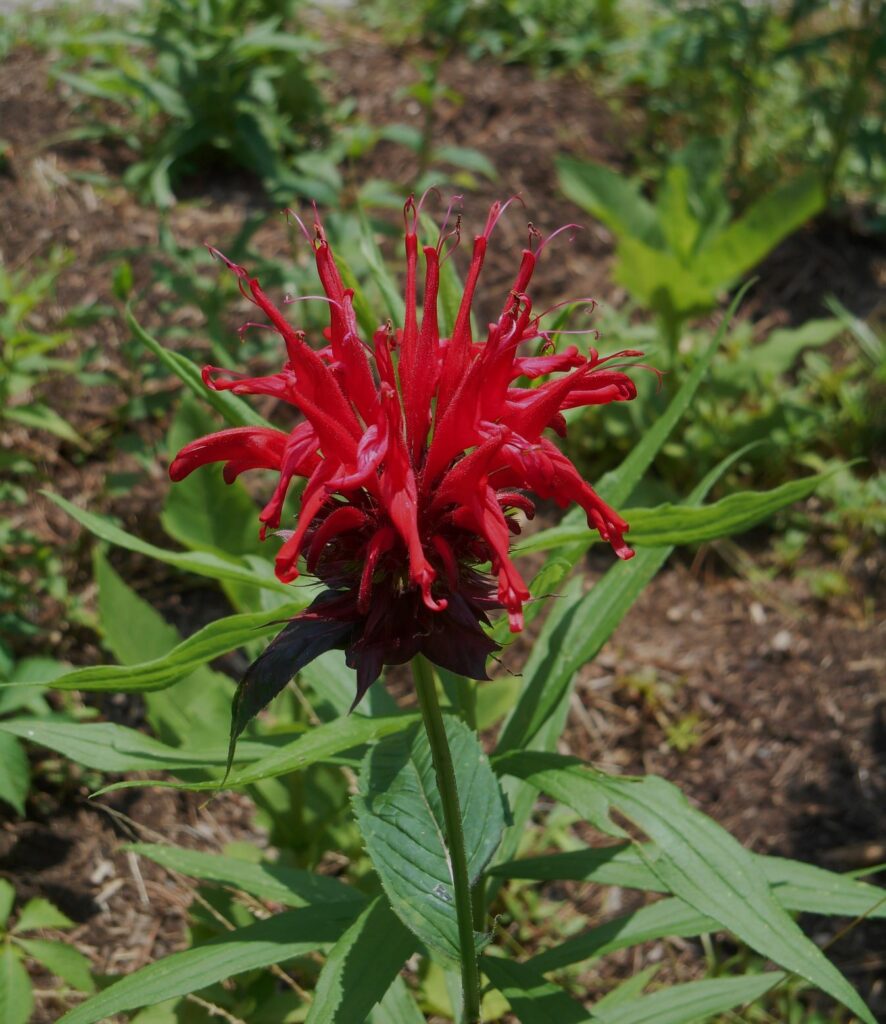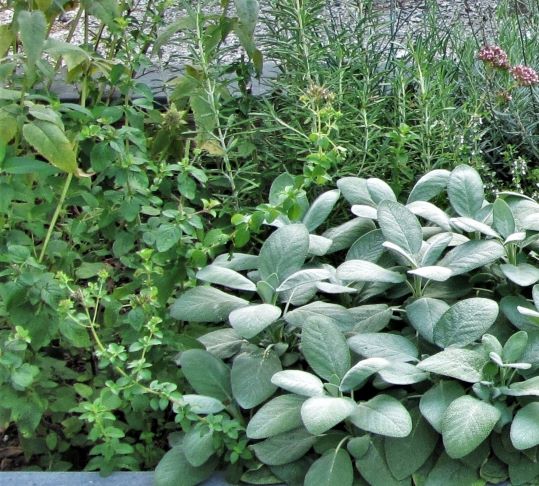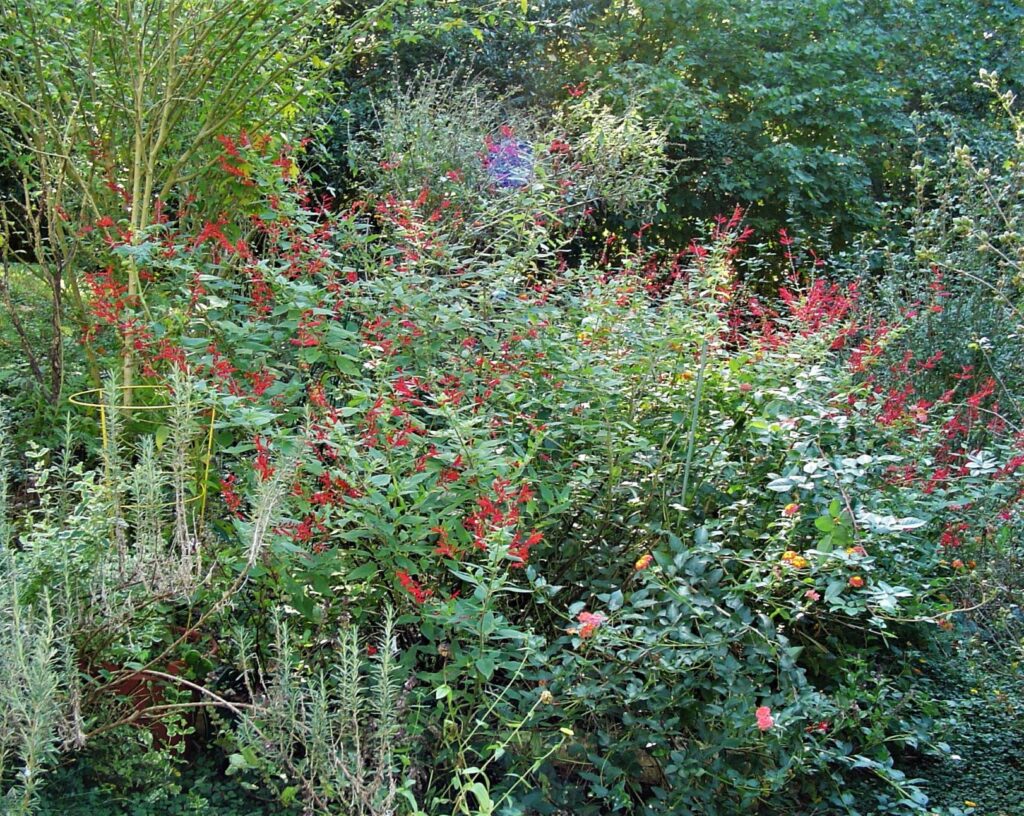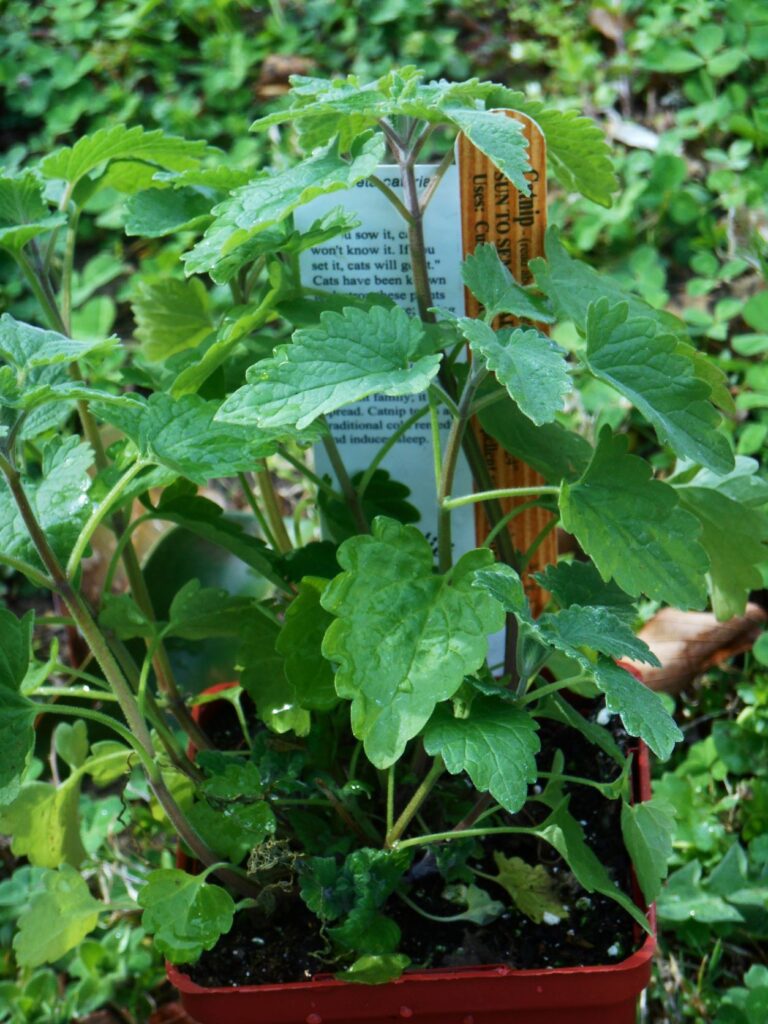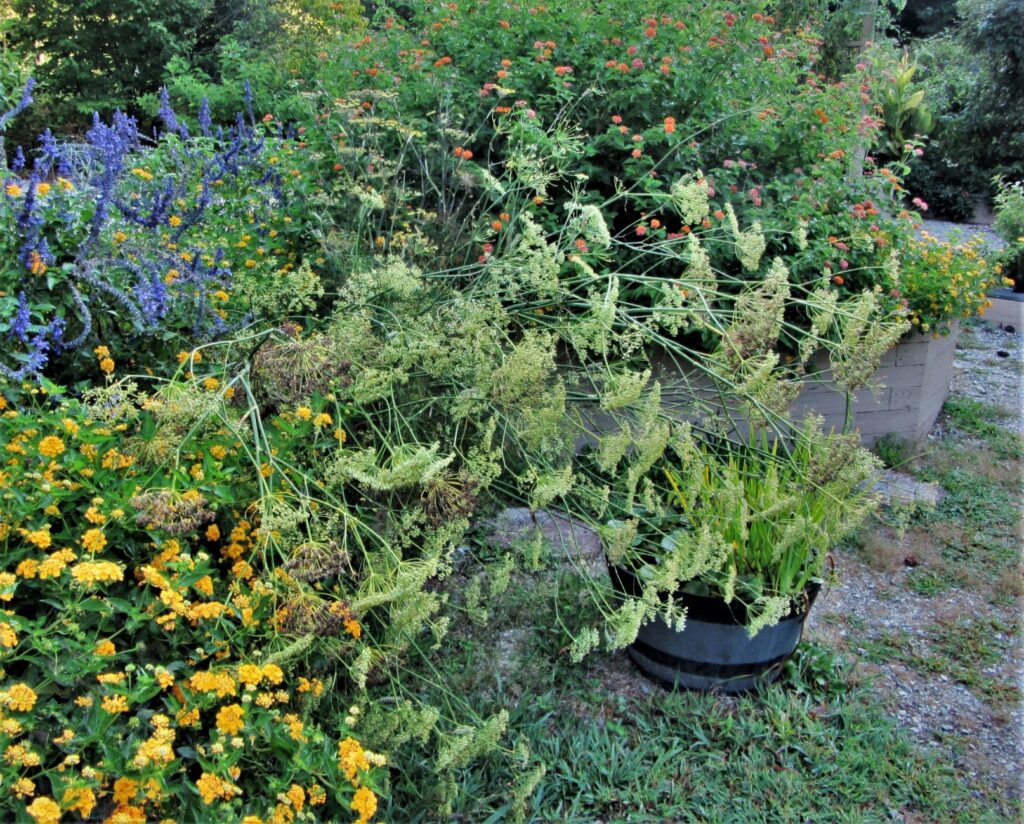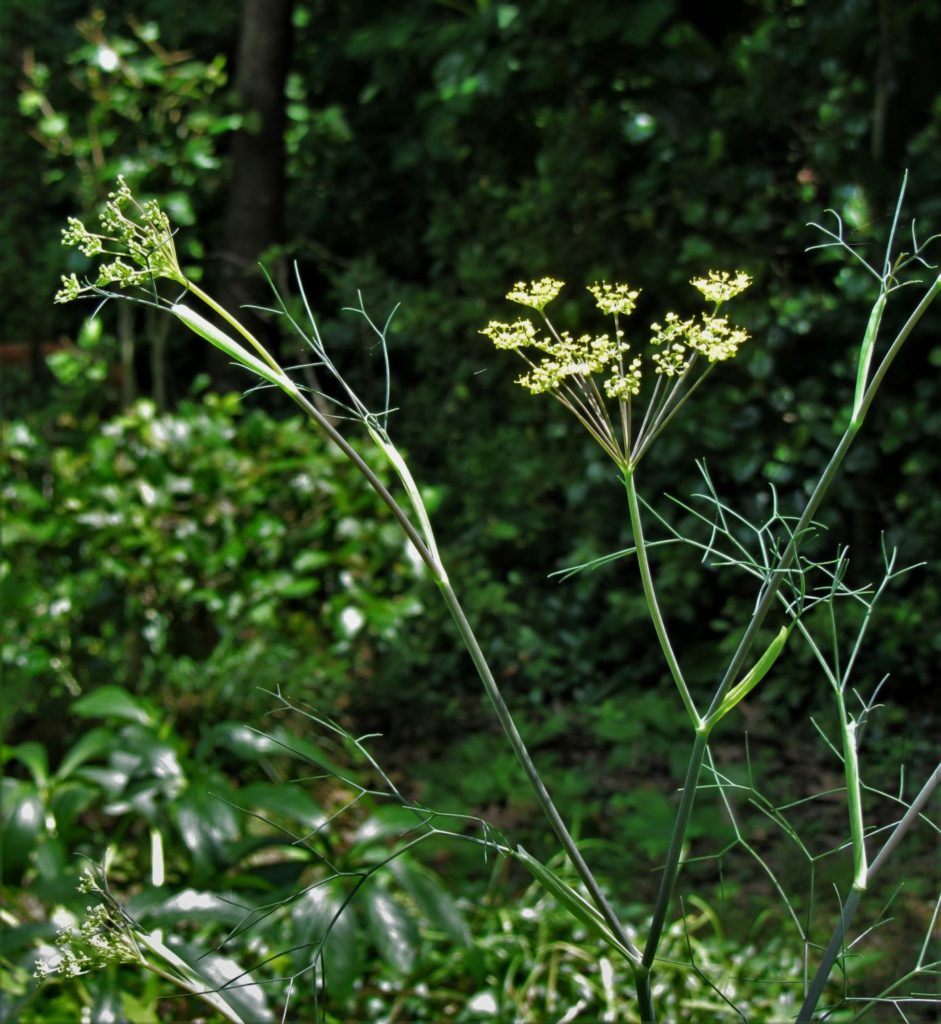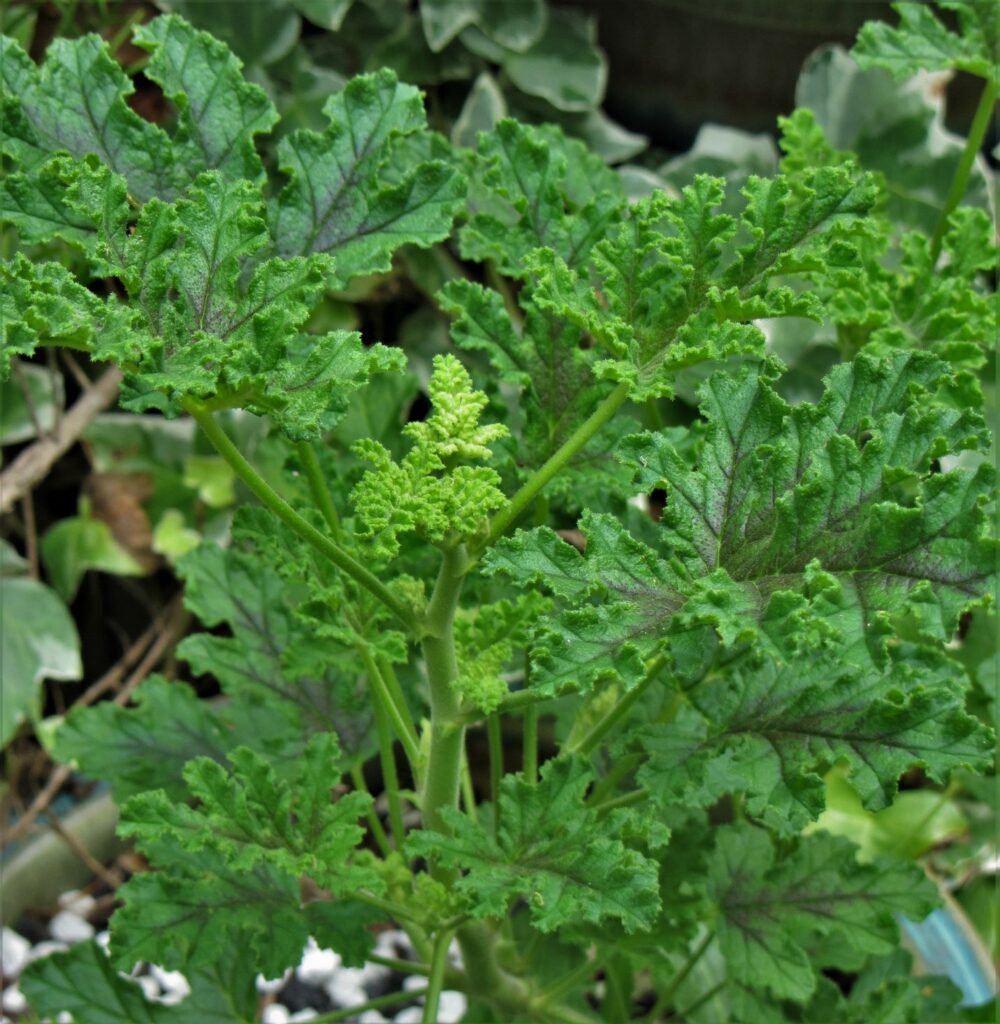Landscaping With Herbs Part II: Deciduous Perennial Herbs
What is an Herb?
Why is mint an herb, but clover isn’t? Have you ever given it much thought? Botanically, any plant with a soft stem, that dies back in winter, is ‘herbaceous.’ Were you give a stack of a dozen cards, each with the name and picture of a plant, could you sort them into ‘herbs’ and ‘not herbs’?
If asked, most of us could probably name at least five herbs. Those used in cooking, like basil and thyme might come first to mind. While most herbs are edible, and highly fragrant, it would be ill-advised to eat all herbs. A special handful of them are psychoactive and have a long and storied history when used as ointments, infusions or smoke.
Herbs give us that something extra. Herbs are fragrant. Most are flavorful and enhance the flavors of other foods, or may be brewed into beverages. Herbs bloom, and their flowers attract honeybees and other pollinators. Honey may be flavored when bees frequent herbal flowers. And perhaps most importantly, herbs may be medicinal. Their essential oils and other compounds heal and soothe the human body. Herbs and herb gardens were the source of medicine throughout most of our history and in all of our cultures. Traditional medicine across many cultures still depends on herbs for healing today.
Narrowing Our Focus
For our purposes, we will consider the leaves, flowers and soft stems of herbal plants, leaving the fruits and bark to other categories. These parts may be used fresh or dried in a variety of ways. We are going to focus on the living plants and how they may be used in the home landscape, not on how to use herbs for cooking, healing, or ritual, in this article.
We have already discussed perennial evergreen herbs in Part I of this series. These can be challenging to grow since they originate in the drier Mediterranean climate, where they get more sun and less rain than in coastal Virginia. We discussed a few strategies to grow these shrubby plants more successfully.
Perennial Herbaceous Herbs
In Part II, we will discuss a few perennial herbaceous herbs. These die back to the ground after the first frost of autumn, and emerge again, if we are lucky, in the spring. A few of these are marginally hardy, or ‘short-lived’ perennials that may not return every year. This is not an exhaustive list, but provides a starting place for those who want to incorporate useful herbs into their gardens.
Herb Culture
These herbaceous herbs generally thrive in our climate. They appreciate moist, rich soil and need 6-8 hours of sunlight a day. Most will grow in partial shade, but may not bloom as much or grow as large as those in full sun. Most will grow in a variety of soil types, including the clay so many of us have in our yards or in containers in commercial ‘potting soil.’ Amend the clay with compost and mulch with organic matter as you would for any other perennial plant. Gravel mulch also works well with these herbs, as with the woody herbs, because it helps to keep their lower stems and leaves clean and healthy.
Many soils in our area tend to be acidic. Their pH level is below 6.5. A soil test will provide that information. Digging lime into a garden bed raises its pH level. Another solution, for growing those herbs that prefer neutral or more alkaline soil, is to grow them in a container or in a raised bed. A raised bed also provides better drainage for those herbs that don’t thrive in wet soils. Fill a raised bed with a mix of commercial topsoil and compost. Both should have a more neutral pH reading than our native soil.
‘Safe’ Herbs
Grow these herbs with confidence that deer and other grazing animals will leave them strictly alone. These are ‘safe’ herbs that won’t cause harm to children or pets should they take a nibble. In fact, these very fragrant plants are essential to use in gardens for children, the elderly or disabled, and may be considered ‘therapeutic’ plants. It is fine to touch them, inhale them, and perhaps even break off a piece to roll between the fingers to release their essential oils. Use flowering stems in the vase.
These herbs are ‘cut and come again’ plants that grow larger and fuller as you pinch, trim, and use them. They generally root quickly in a jar of water. It is easy to share rooted cuttings with friends. They are also important plants to support pollinators and songbirds. Use these in a wildlife friendly garden to invite a wide variety of butterflies, bees, and even hummingbirds. Allow some flower stems to go to seed, and watch the goldfinches gather to eat them!
Herbs from the Mint Family
Several of these herbs are members of the mint, or Lamiaceae family.
Mints have square stems; clusters of small, pollinator friendly flowers; fragrant leaves; and many send out above and underground stolons which help them spread into a wide ‘patch.’ Grow the spreading varieties in a raised bed, tub or other container to limit how far they can spread.
There are between 13 and 25 species of mint across most continents, but there are also many hybrids and named cultivars. Mints have a variety strong fragrances including lemon, orange, chocolate, nutmeg, pineapple, apple and others in addition to the traditional peppermint fragrance.
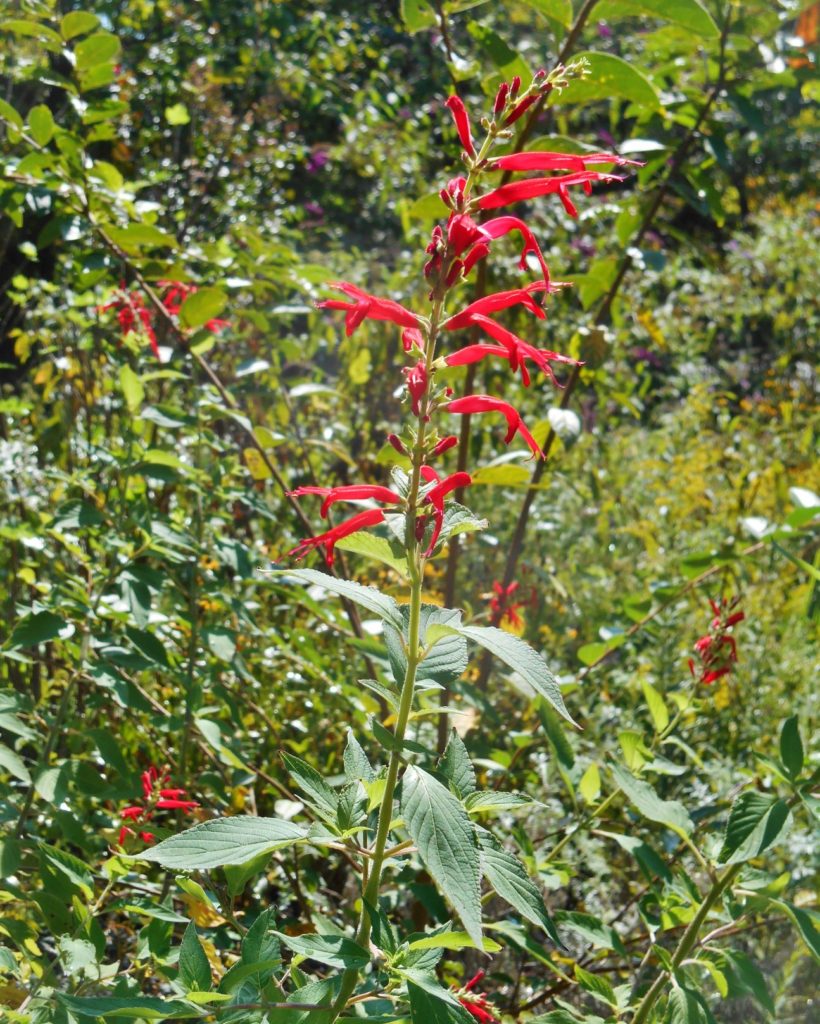
Pineapple sage, Salvia elegans, provides sweetly flavored leaves. Late hummingbirds appreciate its flowers, which open in October and November in our area.
Mint Mentha spicata (spearmint) and Mentha x piperita (peppermint) grow to 2’ high on upright stems. Native to Europe, these spreading, fragrant herbs prefer moist, rich soil and perform well in wet areas and rain gardens to quickly absorb and release water. They are hardy in Zones 5-9 and deter ants, rabbits, deer, and other animals while attracting pollinators. Rub mint leaves on exposed skin to repel biting insects.
Long bracts of tubular flowers may be white, pink, or purplish blue. These are the classic herbs used to flavor tea, candies, chewing gum, and other mint flavored foods. They are calming herbs used to freshen the breath and treat upset stomach.
Pennyroyal, Corsican mint, apple mint, pineapple mint, lemon mint and others are related species or hybrids within the Mentha genus. Some of these have variegated leaves.
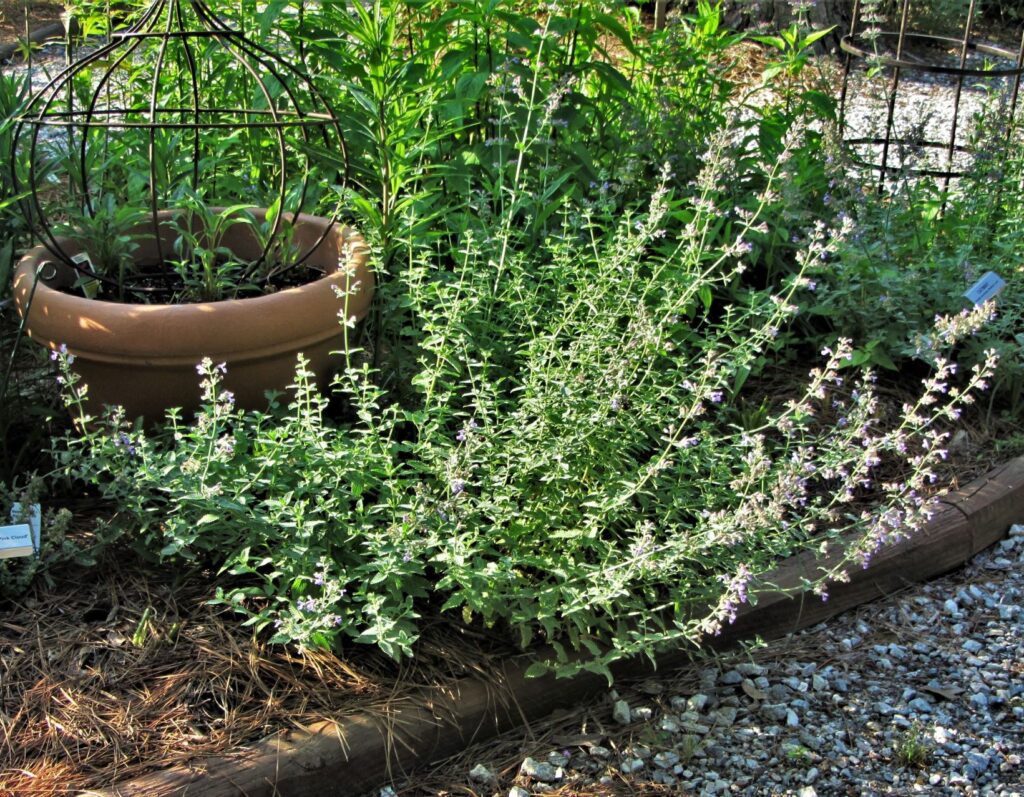
Agastache is a butterfly magnet. A member of the mint family, its leaves carry an essential oil that repels biting insects. It grows in the Pollinator Garden at the WBG.
Hummingbird Mint or Giant Hyssop Agastache ssp. Grown mainly for their showy flowers and ability to attract every butterfly in the area, these well-behaved, clumping members of the mint family don’t spread themselves around. They dislike wet feet and require a well-drained sunny location to persist. Hardy in Zones 5-10, give these showy perennials room to spread as they can grow to 4’ tall and wide. A. ‘Blue Fortune’ and A. ‘Blue Boa’ can be found in most garden centers each spring. There are many named cultivars and hybrids available, with flowers in white, cream, yellow, orange, red, purple, pink and blue. Sizes will vary by cultivar. A. ‘Crazy Fortune’ has beautifully variegated leaves and blue flowers. Leaves are edible and may be used in making teas.
Lemon Balm Melissa officinalis another native of Europe, is grown for its deeply lemon scented leaves. It grows to 3’ tall and wide in Zones 3-7. It will spread itself around if permitted through its seeds and rhizomes, so should be contained like other mints to control its size. Its flowers are white. Lemon balm prefers well drained acidic to neutral soil and will grow in sun or part shade. It tolerates clay, drought, and repels grazing animals and biting insects. Its leaves may be eaten or brewed fresh or dried, and they are a frequent ingredient in potpourris. This herb has a variety of medicinal uses.
Bee Balm, Bergamot, Oswego Tea Monarda ssp. are native to North America and were invaluable to European colonists prior to and during the American Revolution. They used Monarda leaves to blend herbal teas instead of buying tea from English merchants. Butterflies, hummingbirds and other pollinators frequent Monarda flowers, which are tubular like other mints, but are arranged in round clusters at the top of tall stems.
Monarda may grow to 5’ or more tall and 3’ wide. It produces stolons and spreads like peppermint or spearmint. It also produces copious amounts of seed, which germinate freely. Plants are subject to powdery mildew in our area because of the humidity. Grow in full sun and thin the plants as necessary to increase air circulation. Control size and increase blooms by cutting plants back to encourage branching and additional flowers. Deadhead spent flowers to encourage additional blooms in mid to late summer.
Grow Monarda on moist, acidic, neutral or alkaline organically rich soil. It tolerates a wide range of soil types and is hardy in zones 4-9. Leaves and flowers are edible and were used medicinally by Native Americans.
Oregano Origanum vulgare and Marjoram Origanum marjorana are native to Southern Europe, particularly in the regions near Greece and Turkey. Both have a deep, savory flavor and are most frequently used dried and crumbled to season foods during and after cooking. Crumbled oregano provides the essential flavor in both classic Greek salad dressing and the distinctive spice blend, Za’atar.
Oregano and marjoram are both well-behaved mounding plants, to 2’, with tiny white or pink flowers held in clusters at the tops of stems. When grown in a container or raised bed their stems will spill over the sides. They are marginally hardy in our area, grow best in full sun, and want neutral to alkaline soil to grow well. Harvest frequently to keep the plant bushy and to control size.
Pineapple Sage Salvia elegans is grown for its fragrant leaves and its showy, late season red flowers. It may not bloom until October, but continues until struck by frost. It is a hummingbird favorite because it has large, easy to access tubular flowers arranged in groups of four around a long flowering spike. This native of Mexico and Central America may grow to 5’ tall and wide. A member of the mint family, like all Salvias, it is a well-behaved clumping perennial that wants consistently moist, organically rich soil to perform well in Zones 8 – 10. All parts of the plant are edible. During summer dry spells it may appear to wilt but will perk up again once watered. It generally survives our Williamsburg winters, particularly when well mulched.
Catnip or Catmint Nepeta ssp. includes several related species and hybrids grown mostly as ornamentals. Cats find the scent stimulating, so cat lovers often include N. cataria in their gardens. Leaves are harvested and dried for use in cat toys and treats. Flowers are blue, lavender, purple or white and foliage often a subdued grey or silver-green. Its appearance is more refined than most of the mints.
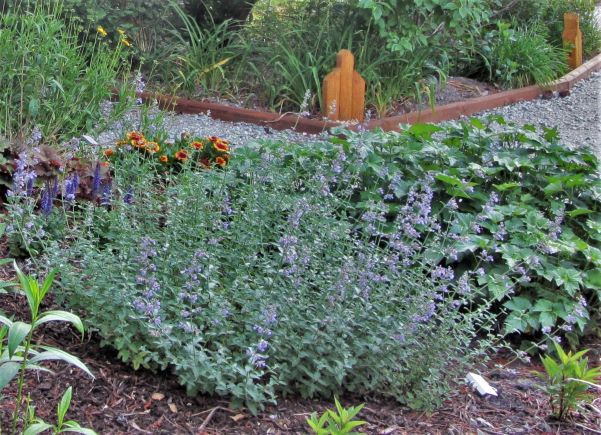
N. racemosa, a dwarf catmint, grows in the Perennial bed at the Williamsburg Botanical Garden in May of 2021.
This clumping perennial is very drought tolerant once established and prefers well-drained soil and full sun. Use catmint in rock gardens, along paths, and in the front of flowering borders as well as in mixed containers. A good dwarf cultivar of catmint is N. ‘Walker’s Low.’ It performs well in our area, has excellent color and provides a long season of bloom. Shear flowering stalks as they finish to extend the bloom with another flush of flowers.
Nepeta helps repel squash bugs, aphids, and other insects in a vegetable garden. It is edible and may be dried and used in sachets and potpourris. A native of Eurasia and Africa, catmint is hardy in Zones 3-8.
Perennial Herbs from Other Families
Fennel Foeniculum vulgare, native to Southern Europe, is hardy in Zones 4-9. It may grow to 6’ tall and 3’ wide and is a popular host plant for several species of swallowtail butterflies. It is a member of the Apiaceae plant family. Fennel leaves are used as an herb to season foods, its bulb may be sliced and eaten raw or cooked. Fennel seeds are used in seasoning and are chewed to freshen the breath. Bronze fennel is essentially the same as fennel, except for its more colorful foliage. When the bulbs are left to overwinter, they multiply forming an expanding clump. Flower clusters are yellow and attract pollinators. Birds will eat any unharvested seeds.
Fennel is adaptable and easy to grow. It thrives on a variety of soil types in full sun and grows easily from seed. It tolerates both wet soil and drought.
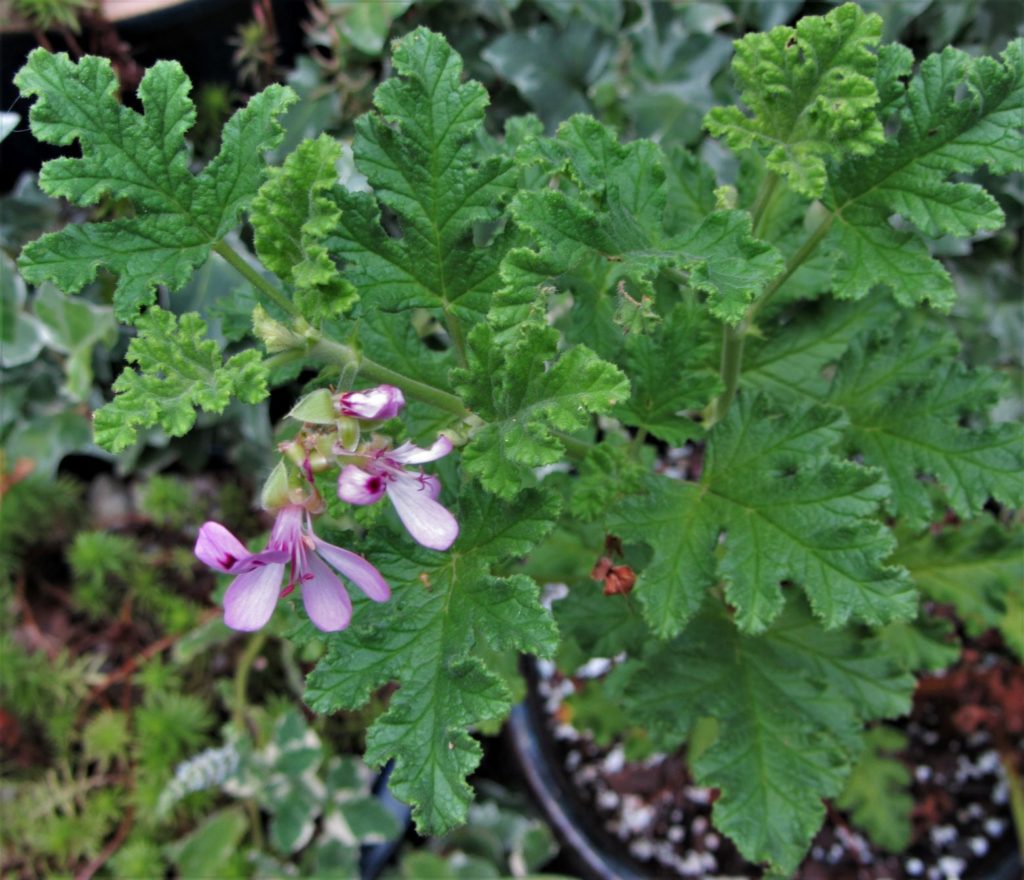
Rose scented geraniums are marginally hardy in our area. Overwinter in a sheltered spot to keep the plant from year to year.
Scented Geraniums Pelargonium ssp. are native to South Africa and thrive in Zones 8b or 9-10. They are marginally hardy in our area. There over 200 Pelargonium species in the Geraniaceae family. Only a few are considered edible herbs. Ivy geraniums, florist geraniums, and bedding geraniums should be grown only as ornamentals.
Look for P. citrosa or lemon scented geranium; P. tomentosum or chocolate mint scented geranium; P. graveolens and P. capitatum, or rose scented geranium to use as herbs. Both leaves and flowers are edible. Leaves may be used fresh or dried in teas and to flavor sugar, honey, butter, and vinegar or as decoration on baked goods. Stems may also be cut for the vase.
Grow scented geraniums in full sun for best flowering. They will grow in a variety of soils and are heat and drought tolerant once established. These plants grow into small woody shrubs in their native environment . Plant them in beds and borders or use them in containers. They may be brought indoors in winter as houseplants. Propagate from stem cuttings.
We will discuss annual and biennial herbs, and those tender perennials normally grown here as annuals, in a third post to this series.
Landscaping with Herbs in Williamsburg Part I
Landscaping With Herbs Part III: Annual, Biennial and Tender Perennial Herbs
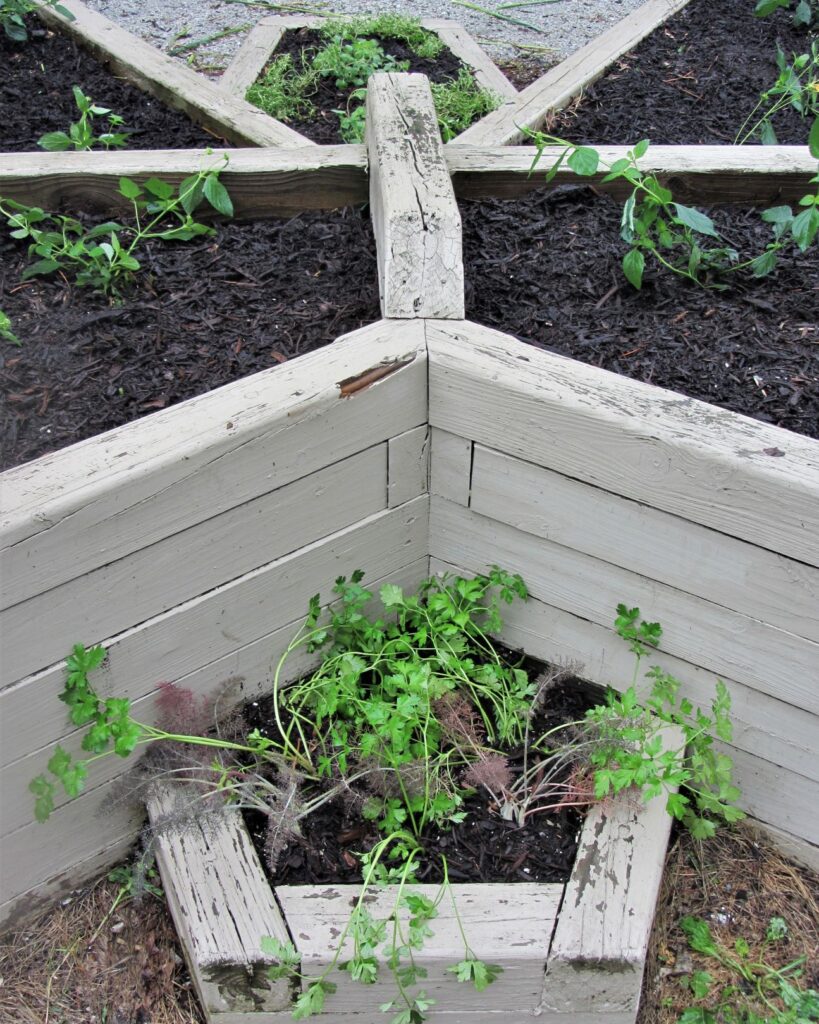
Herbs may not look very impressive when first planted. Bronze fennel and flat leaf parsley grow in the ‘head’ of the butterfly raised bed at the Williamsburg Botanical Garden to host swallowtail butterflies. Thyme and oregano grow in the ‘tail,’ with Lantana newly planted in the ‘wings.’ The fennel are intended to look like antenna. June, 2020
All Photos by E. L. McCoy
Landscaping with Herbs in Williamsburg Part I
Landscaping With Herbs Part III: Annual, Biennial, and Tender Perennial Herbs
Mythical Rosemary
Magical Thyme
Sage ‘The Savior’


